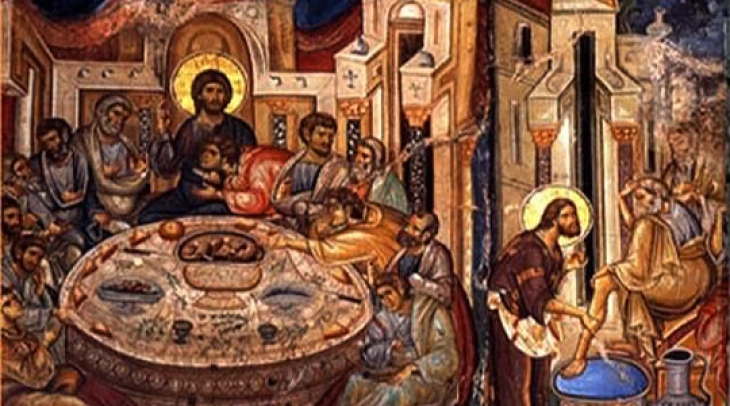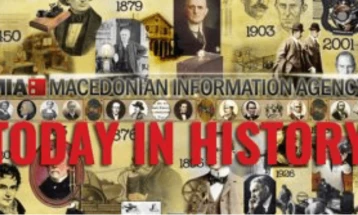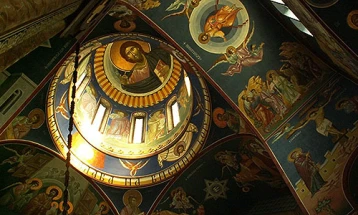
29 June 2024 (MIA)
Macedonian Orthodox Church Calendar
St Tikhon, Bishop of Amathus
A wonderworker, Tikhon was chosen unanimously as bishop on the death of blessed Mnemonius, and consecrated by the renowned Epiphanius for the diocese of Amathus. The purity of his life and his zealous adherence to Orthodoxy recommended him for this rank. There were still pagans in Cyprus at that time, and Tikhon under-took with apostolic zeal to turn the unbelievers into believers, and he had great success in this. After lengthy toil in the Lord’s vineyard, he entered into the eternity of the blessed in about 425. He is named a wonderworker because of the many miracles that he performed during his lifetime. His father was a baker, and whenever his father left him alone in the shop, he would distribute the bread to the poor without payment. His father reproached him once for doing this, so he prayed to God and their storehouse became so full of grain that they could open the door only with difficulty. Another time he planted a dry slip from a vine and the vine grew green and bore fruit in its season.
Catholic Calendar
Ss. Peter and Paul
Simon Peter or Cephas, the first pope, Prince of the Apostles, and founder, with St. Paul, of the see of Rome.
St. Peter
Peter was a native of Bethsaida, near Lake Tiberias, the son of John, and worked, like his brother St. Andrew, as a fisherman on Lake Genesareth. Andrew introduced Peter to Jesus, and Christ called Peter to become a disciple. In Luke is recounted the story that Peter caught so large an amount of fish that he fell down before the feet of Jesus and was told by the Lord, “Do not be afraid; from now on you will be catching men”. According to rich tradition, Peter was crucified on the Vatican Hill upside down because he declared himself unworthy to die in the same manner as the Lord. He was then buried on Vatican Hill, and excavations under St. Peter’s Basilica have unearthed his probable tomb, and his relics are now enshrined under the high altar of St. Peter’s. From the earliest days of the Church, Peter was recognised as the Prince of the Apostles and the first Supreme Pontiff; his see, Rome, has thus enjoyed the position of primacy over the entire Catholic Church. While Peter’s chief feast day is June 29, he is also honoured on February 22 and November 18. In liturgical art, he is depicted as an elderly man holding a key and a book. His symbols include an inverted cross, a boat, and the cock.
St. Paul
St. Paul, the indefatigable Apostle of the Gentiles, was converted from Judaism on the road to Damascus. He remained some days in Damascus after his Baptism, and then went to Arabia, possibly for a year or two to prepare himself for his future missionary activity. Having returned to Damascus, he stayed there for a time, preaching in the synagogues that Jesus is the Christ, the Son of God. For this he incurred the hatred of the Jews and had to flee from the city. He then went to Jerusalem to see Peter and pay his homage to the head of the Church. The Acts of the Apostles gives us no further information on the life of the Apostle. We gather, however, from the Pastoral Epistles and from tradition that at the end of the two years St. Paul was released from his Roman imprisonment, and then traveled to Spain, later to the East again, and then back to Rome, where he was imprisoned a second time and in the year 67, was beheaded. St. Paul untiring interests in and paternal affection for the churches established by him have given us fourteen canonical Epistles. It is, however, quite certain that he wrote other letters which are no longer extant. In his Epistles, St. Paul shows himself to be a profound religious thinker and he has had an enduring formative influence in the development of Christianity. The centuries only make more apparent his greatness of mind and spirit.







